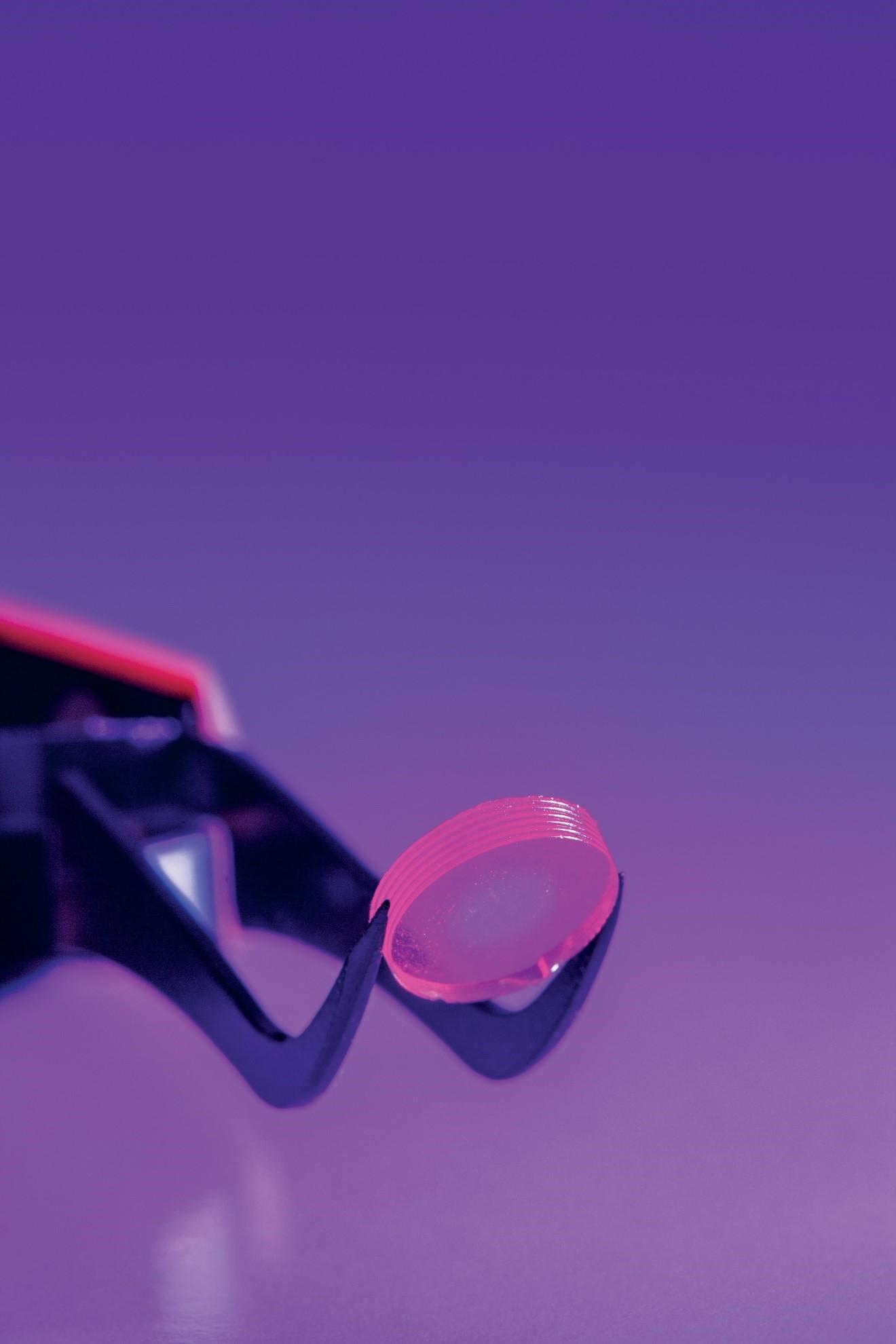Printed glass is of interest in many applications, including optics, decorative pieces, microfluidics, packaging, and more. The current state of the art in additive manufacturing of glass includes techniques such as DLP, SLA, and VAM which use resins made with photopolymer formulations for fabricating silica parts. Broadly speaking, in these processes, parts are fabricated by exposing a photopolymer glass resin to UV light, where the liquid glass resin turns from a liquid to a solid upon exposure to UV light. After printing, excess resin is removed and then undergoes a thermal treatment, wherein the more volatile organic components are removed by drying at a lower temperature, followed by a pyrolysis step where organic binder material is removed through pyrolysis, and finally followed by sintering of glass particles to create a dense glass part. While some of the glass parts produced with photopolymer additive manufacturing techniques have various dimensions spanning over a centimeter, most of the parts do not have thicknesses greater than a few millimeters. The processing of the as-printed part through drying, debinding, and sintering can however cause a large amount of shrinkage in the part, sometimes as large as 50% or more, which may be difficult to account for with relatively larger sized parts (greater than 5 mm). Another challenge with conventional glass processing methods is creating glass parts (e.g., optical components) that have a gradient composition. LLNL researchers have developed methods to address these challenges.
LLNL researchers have developed a custom resin formulation which uses a dispersing solvent and only a multifunctional monomer as the binding agent. The dispersing solvent system typically used has multiple components meant to achieve excellent dispersal of silica in order to create a flowable resin (rather than a paste). The dispersing agent has low vapor pressure, which allows the 3D printed glass part to dry at a slower, more controlled rate versus higher vapor pressure solvents that, through rapid evaporation, can cause damage to the part. The dispersing agent’s refractive index can be tuned to match that of the silica resulting in optical transparent final structures.
Additionally, LLNL researchers have developed a method for fabricating glass components with custom material composition profiles in 1-, 2-, or 3-dimensions. In this method, Direct Ink Writing (DIW) additive manufacturing technique is used to print filaments of a rheologically-tuned ink—pastes containing a glass forming species--into a loosely bound, amorphous, low density form (LDF), analogous to a green body in ceramics. DIW inks of different compositions may be blended inline at the print nozzle to achieve the desired material composition at the desired location within the LDF. Once the LDF (e.g. monolith, film, or freeform) has been completely formed, the part is dried to remove residual organics and heat treated to form a transparent glass. The resultant glass part retains the compositional variation that was imparted during printing, and it can be further processed to achieve the desired surface figure, surface flatness, or surface quality via grinding and polishing.
Publications:
3D-printed glass enhances optical design flexibility (https://www.llnl.gov/article/46956/3d-printed-glass-enhances-optical-design-flexibility)
D. T. Nguyen, et al., 3D Printed Transparent Glass Adv. Mater. 2017, 29, 1701181. (https://doi.org/10.1002/adma.201701181)
Rebecca Dylla-Spears et al. ,3D printed gradient index glass optics. Sci. Adv.6, abc7429(2020) (https://doi.org/10.1126/sciadv.abc7429)
- >5 mm dimensions of 3D printed parts.
- The formation of optical or non-optical glass with custom composition profiles that are not achievable by conventional glass processing techniques.
- Ability to match refractive index using different dispersing agent mixtures.
- Capable of use with SLA, DLP, VAM, and DIW additive manufacturing techniques.
- Livermore’s DIW-printed invention also enables:
- The formation of optical or non-optical glass with custom composition profiles that are not achievable by conventional glass processing techniques.
- The introduction of species that cannot be introduced easily by diffusion methods.
- The creation of glass optics containing custom patterned material properties that are far larger than those achievable by diffusion methods.
- Livermore’s DIW-printed invention also enables:
Optical (active or passive) components such as lenses, fiber optic cables, glass sensors, non-optical glass accessories as well as functionally graded glass structures. For DIW fabricated gradient composition glass, ions, molecules, or particles can be introduced in arbitrary (i.e. custom) locations within the glass components (monoliths, films, or free forms) to achieve spatially varying material properties within the glass.
Current stage of technology development: TRL 3
LLNL has filed for patent protection on this invention.


